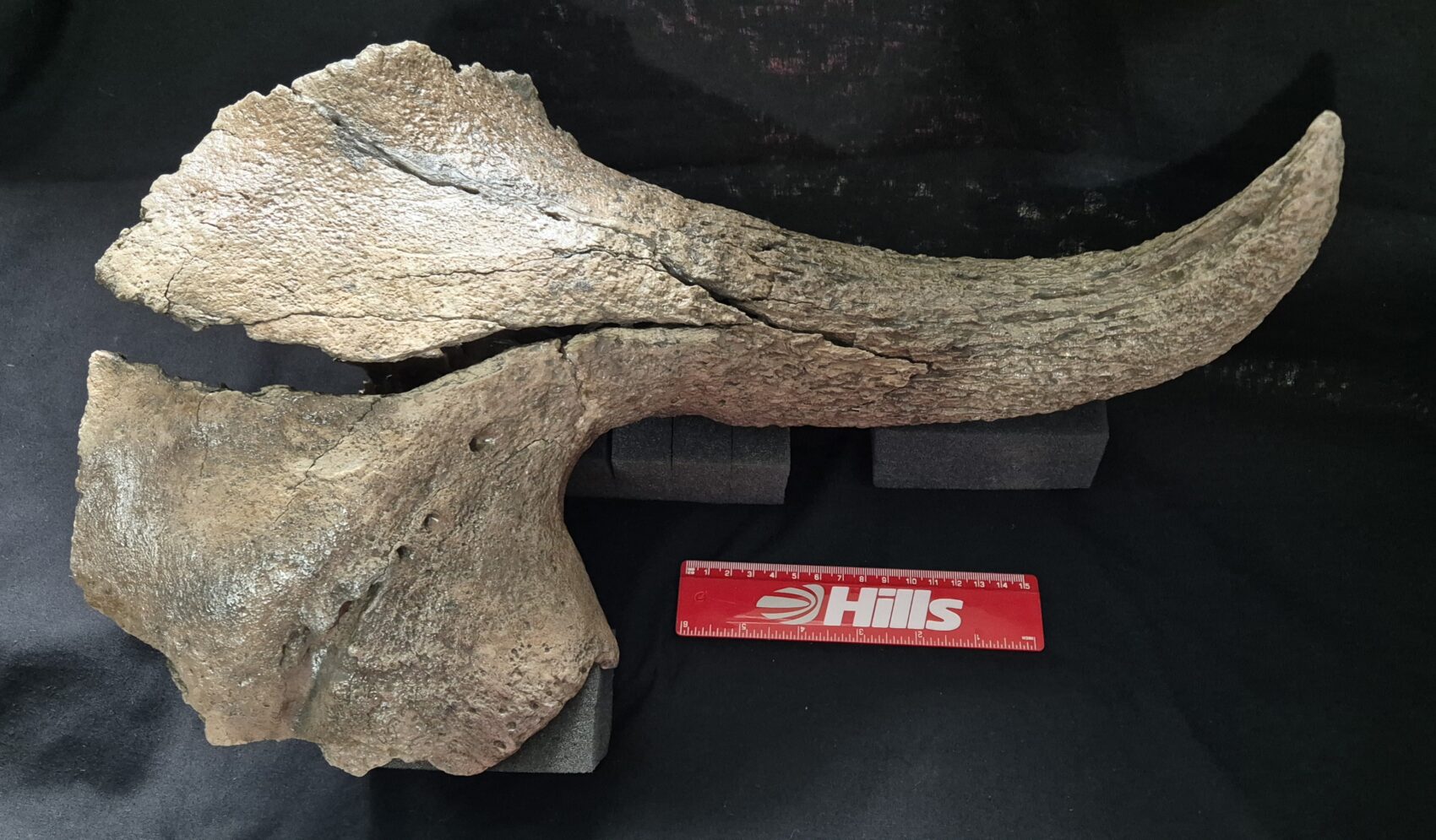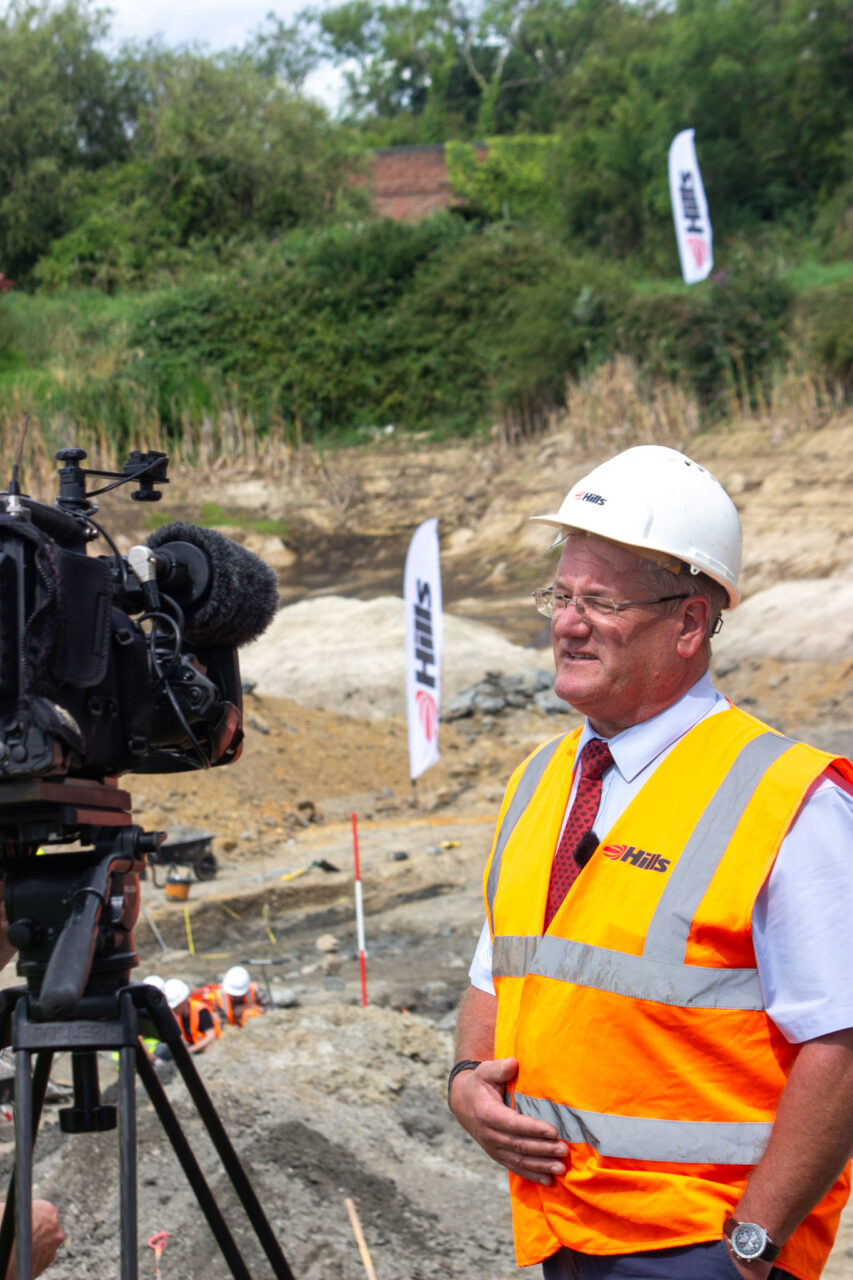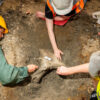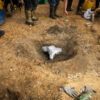Supporting scientific research & excavations
Archaeology and Palaeontology
Hills Quarry Products provides significant financial and practical resources towards the identification, excavation, recording and reporting of the geology, archaeology and palaeontology in the areas where the company has established sand and gravel quarries.
This success of these projects relies on working in partnership with local planning authorities, academic bodies and community interest groups. Hills is extremely proud of and is keen to maintain these partnerships for the benefit of local communities, academia and future generations.
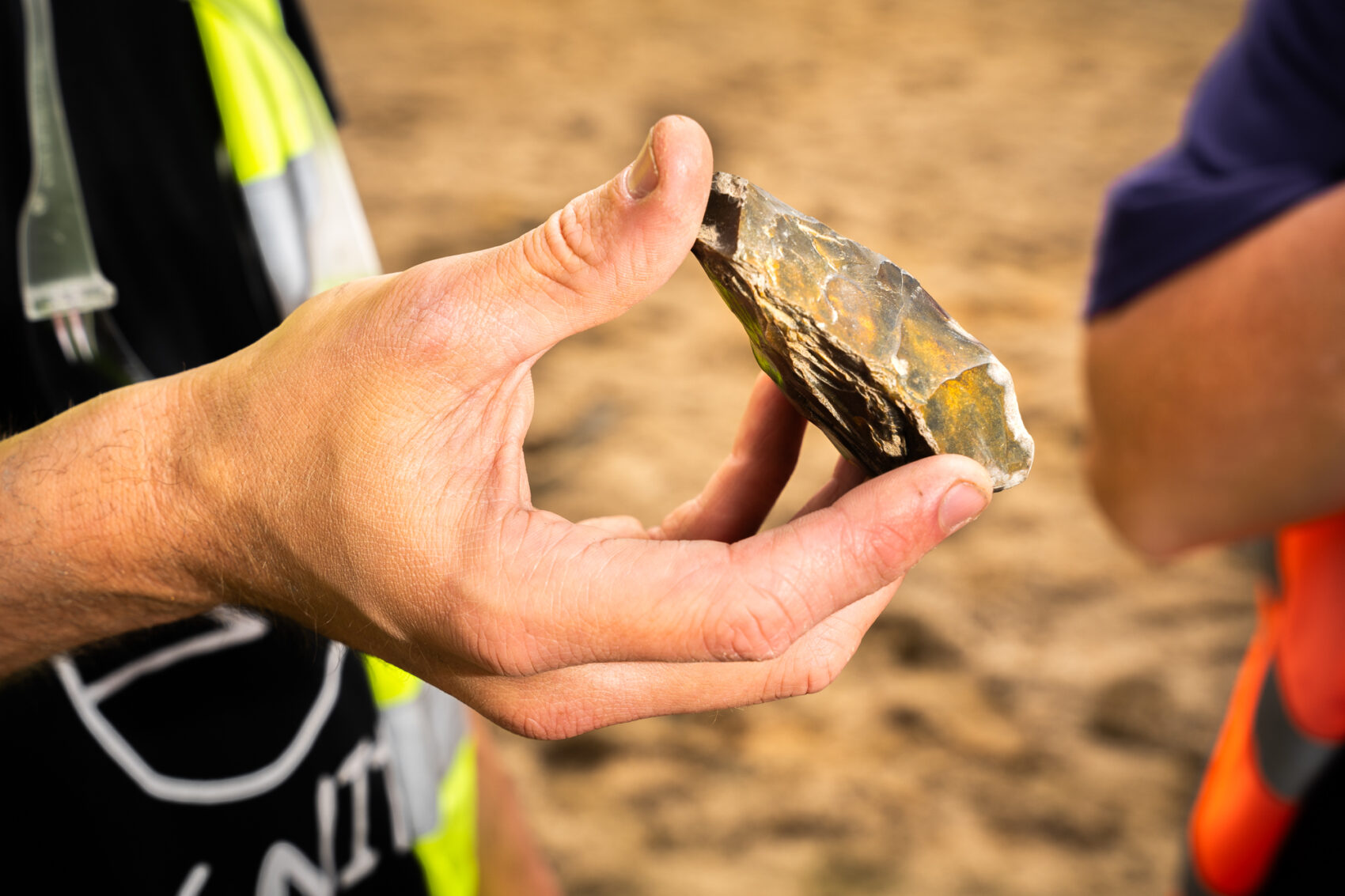
Palaeontology – The Mammoth Graveyard
A 200,000 year old mammoth graveyard was found at Hills’ Cerney Wick Quarry. Sally and Neville Hollingworth made the initial discovery in 2017, which then led to further excavation of the site by archaeologists, geologists and palaeontologists.
It also drew the attention of Sir David Attenborough who presented the BBC documentary ‘Attenborough and the Mammoth Graveyard‘covering this significant and unique find.
Subsequent digs in 2024 and 2025 attracted over 200 volunteers from more than 20 universities, indicative of the importance of this site to the palaeontological community.
Site visits from television news crews, live radio broadcasts and coverage in national newspapers ensured that the palaeontological discoveries didn’t go unheralded. A free ‘Mammoths at The Museum’ public exhibition was held at the Corinium Museum in Cirencester in the early 2025. To enable this, extraction, preserving and cataloguing of all the discoveries happened within just six months. Another dig at the mammoth graveyard occurred in 2025, where Hills once again supported the efforts of team #TuskForce.
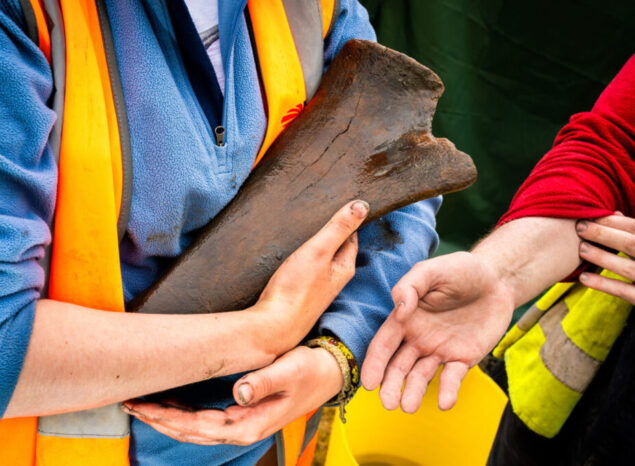
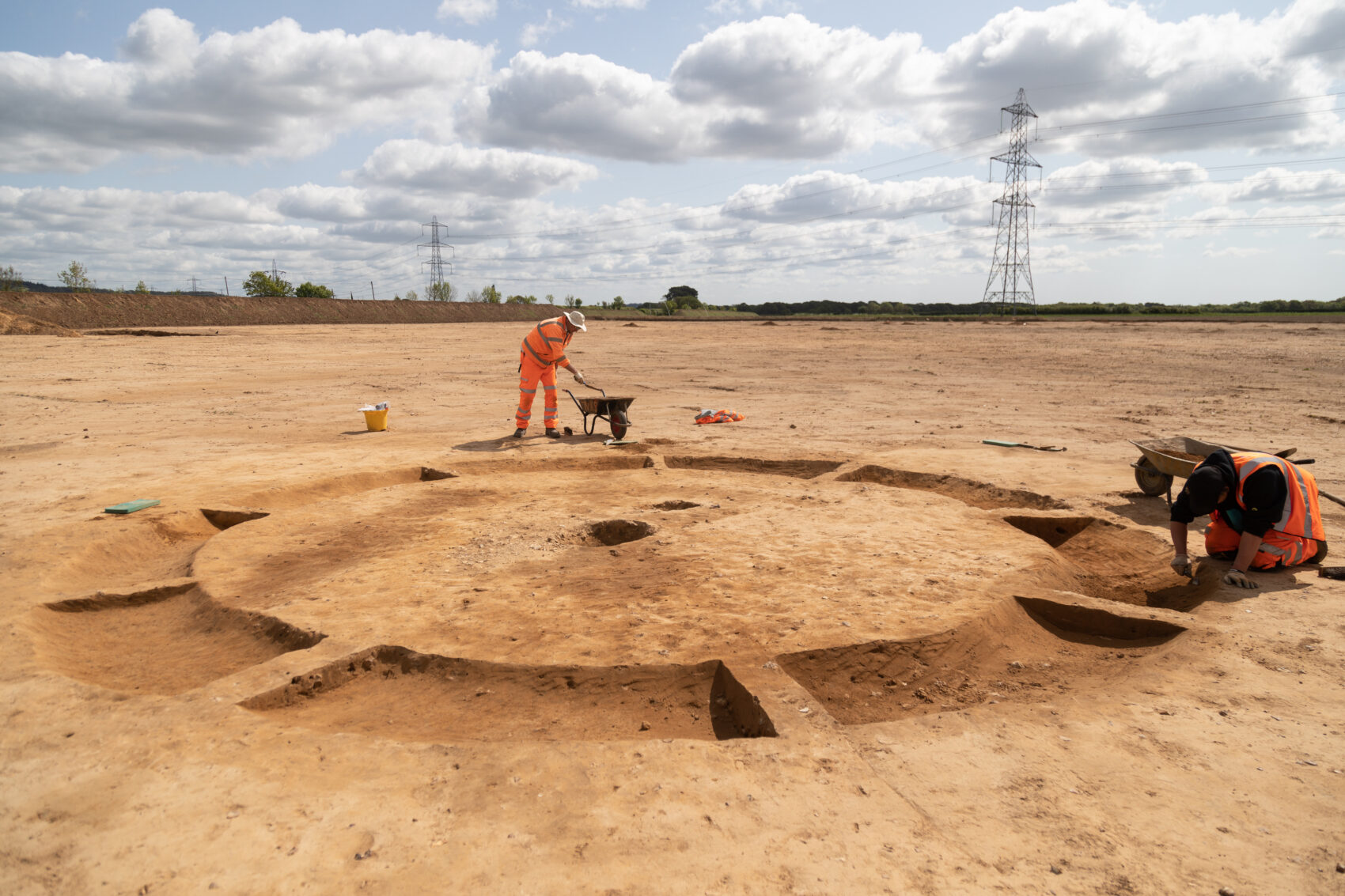
Archaeology
Hills Quarry Products works closely with specialist teams like Border Archaeology and Thames Valley Archaeological Services to ensure that any discoveries of historical or archaeological significance at its sand and gravel quarries are preserved for future generations to enjoy.
Hills Quarry Products prides itself in ensuring the proper process is carried out, respecting the historical story of a site beyond due diligence. We recognise the social value in protecting our past, especially for the local community.
Roman remains unearthed at Woodsford Quarry
Archaeologists made a remarkable discovery at Hills’ Woodsford Quarry when excavations revealed the skeleton of a Roman man who had his feet bent backwards to fit in his coffin.
Painstaking excavations from Thames Valley Archaeological Services (TVAS) revealed the land was farmed and used as a settlement as far back at the Bronze Age – around 4,000 years ago. There have also been finds which date from the Late Iron Age to the Roman periods. But the most exciting discovery unveiled itself when archaeologists uncovered a grave of about 1.80m long, set in a stone sarcophagus – a type of stone coffin typically associated with ancient civilisations.
The coffin would have had a lid, but this has not survived due to centuries of ploughing. The sarcophagus had been crudely carved out of a single huge block of limestone. The TVAS team carefully emptied the grave to reveal the well-preserved bones of a man in his late 20s or 30s. The buried man would have been about five foot 10 inches tall and an initial examination of the bones revealed no signs of disease or other unusual conditions – but further tests will be carried out in which may reveal more about the fate of the man in this unusual grave. The grave is set in the midst of at least 11 other burials – although none of the others have sarcophagi. Archaeologists have confidently dated the graves to the Roman period. No bones survived in the other graves, but the protective effect of the sarcophagus preserved the bones in this grave.
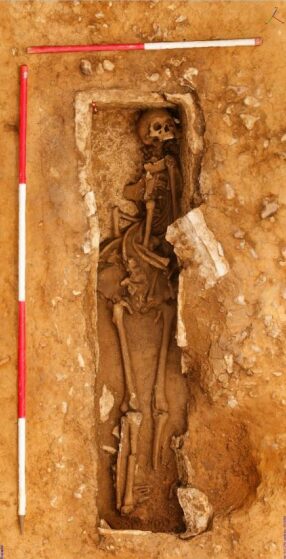
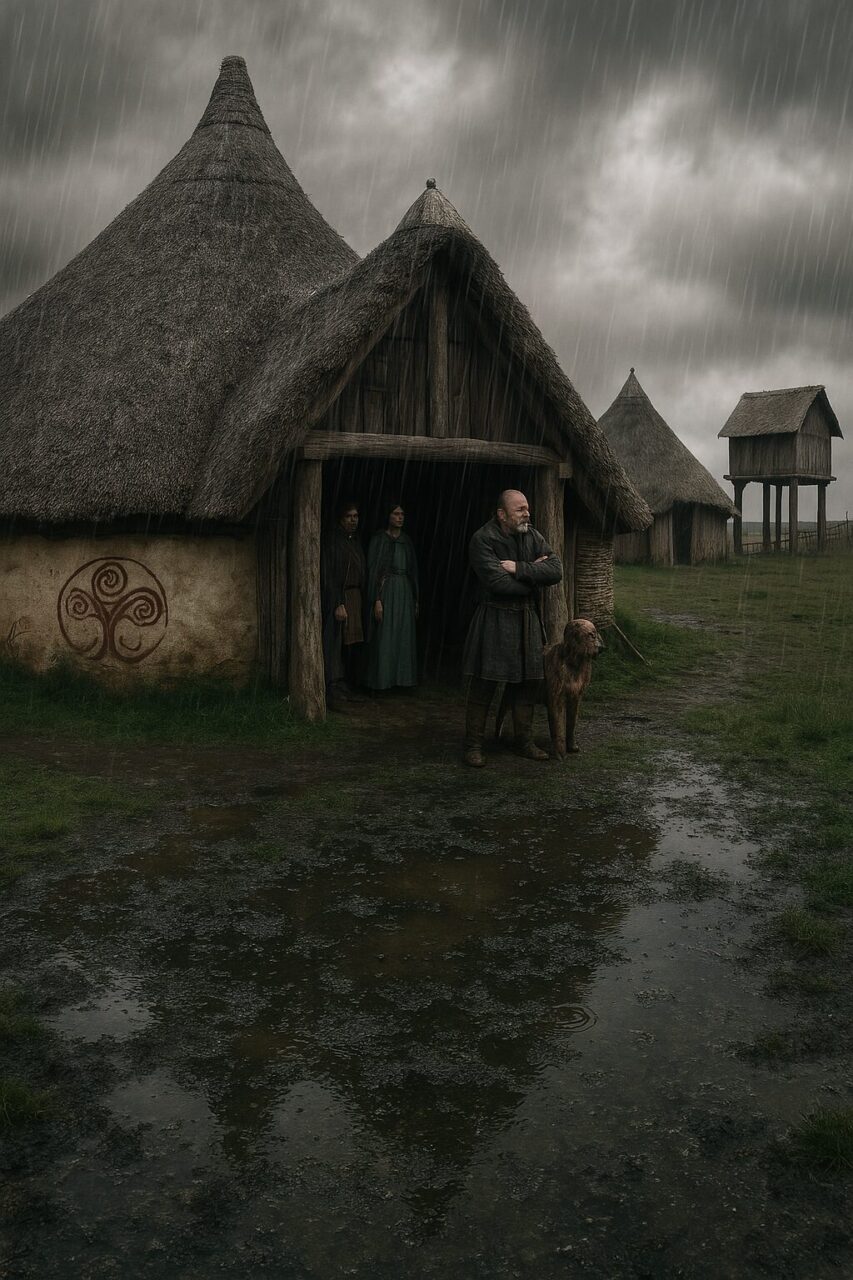
Over £1 million to fund the discovery of a significant Bronze Age farming settlement
Sand and gravel extraction by Hills provided the Oxford Archaeological Unit and Thames Valley Archaeology Services with a valuable opportunity to investigate traces of occupation and burial sites and to recreate a picture of the changing landscape of the Cotswold Community, Wiltshire and Gloucestershire areas over six million years.
One of the oldest boundaries in Britain, made up of hundreds of pits, was found running parallel to the Gloucestershire / Wiltshire county boundary. Careful topsoil stripping by Hills exposed small circular 3,500 year old houses, animal enclosures and wells.
The Romans were attracted to the area by the rich agricultural land and built one of their major towns at Cirencester. A Roman farmstead was also excavated in the Cotswold Community dig along with Saxon timber hall buildings, pottery and evidence of textile production.
The findings of this major archaeological site in the Upper Thames Valley, of which Hills funded the fieldwork, have been recorded in a book ‘Evolution of a Farming Community in the Upper Thames Valley’ published in 2010 and is the source for the images provided here.
